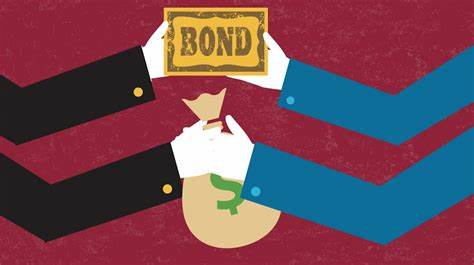Investing in bonds offers a way to diversify your portfolio while generating steady income and reducing overall investment risk. As a popular financial tool, bonds can be an attractive option for investors looking to balance their portfolios with lower-risk assets. However, like all investment vehicles, bonds come with their own set of risks. Understanding the benefits and potential drawbacks of bond investments is crucial for any investor looking to optimize their investment strategy.
In this article, we will explore the key advantages and risks associated with bonds, as well as discuss the different types of bonds available. By the end of this guide, you will have a comprehensive understanding of how bond investments work, how to assess their suitability for your portfolio, and how to mitigate the risks involved.
What Are Bonds?
Before diving into the benefits and risks, it’s important to understand what bonds are and how they function. A bond is essentially a loan made by an investor to a government entity, corporation, or other institutions. In exchange for lending money, the bondholder receives regular interest payments (coupon payments) and the return of the principal at the bond’s maturity.
The two primary types of bonds are government bonds and corporate bonds. Government bonds, such as U.S. Treasury bonds, are issued by national governments and are typically considered low-risk. Corporate bonds, on the other hand, are issued by companies to fund business operations and come with varying levels of risk, depending on the company’s financial health.
Benefits of Bond Investments
1. Steady Income Stream
One of the most attractive features of bond investments is their ability to generate a reliable income stream. Bonds pay interest at regular intervals, typically every six months or annually. For investors looking to supplement their income, such as retirees, this predictable cash flow can be extremely valuable. Bonds are also a great option for investors who prefer a more conservative approach compared to the volatility often associated with stocks.

The fixed interest payments that come with bonds provide a level of stability and consistency in an investor’s portfolio. This makes bonds particularly useful for those who need to ensure a steady source of income over time.
2. Capital Preservation
Bonds are considered a safer investment compared to stocks because they generally offer more stability. While stock prices can fluctuate dramatically, bond prices are typically less volatile. As long as the issuer does not default, bondholders can expect to receive their principal amount at maturity. For those who prioritize capital preservation, bonds offer an opportunity to invest without the same level of risk as stocks.
Government bonds, such as U.S. Treasuries, are considered virtually risk-free since they are backed by the full faith and credit of the government. This makes them a go-to choice for risk-averse investors looking for a safe way to invest their capital.
3. Diversification
Bonds can also help diversify an investment portfolio. Diversification is a key strategy to reduce overall risk by spreading investments across different asset classes. When stocks are performing poorly, bonds may perform better, and vice versa. The negative correlation between stocks and bonds can provide balance in a portfolio, reducing overall volatility and enhancing long-term returns.
Including bonds in a diversified portfolio can help mitigate the risk of large losses, especially during market downturns. Bonds tend to perform well when stocks are underperforming, providing a hedge against market volatility.
4. Tax Advantages
Certain bonds, particularly municipal bonds, offer tax advantages that can be appealing to investors. For example, interest income from municipal bonds is often exempt from federal taxes, and in some cases, state and local taxes as well. This can make municipal bonds an especially attractive option for investors in higher tax brackets who are looking to minimize their tax liabilities.
U.S. Treasury bonds also offer tax benefits, as they are exempt from state and local taxes, though interest income is still subject to federal taxes. Tax advantages can be a key consideration when evaluating bonds as part of a broader investment strategy.
Risks of Bond Investments
1. Interest Rate Risk
Interest rate risk is one of the biggest challenges for bond investors. When interest rates rise, the price of existing bonds typically falls. This happens because newly issued bonds offer higher yields, making older bonds with lower rates less attractive. This inverse relationship between bond prices and interest rates can result in capital losses if bonds are sold before maturity.
For example, if you purchase a bond with a 3% interest rate and interest rates rise to 4%, the value of your bond will decrease, as new bonds offer a better return. While holding bonds to maturity can mitigate this risk, investors must be mindful of the impact rising rates may have on the price of their bonds.
2. Credit Risk
Credit risk, or default risk, refers to the possibility that the bond issuer may be unable to meet its obligations and repay the principal or interest. This risk is higher with corporate bonds, particularly those issued by companies with lower credit ratings. The risk of default is assessed using credit ratings from agencies such as Standard & Poor’s, Moody’s, and Fitch.

Bonds with lower credit ratings, known as high-yield or junk bonds, offer higher interest rates to compensate for the increased risk. Investors must carefully consider the creditworthiness of the issuer before investing in bonds with lower ratings, as defaults can result in the loss of both principal and interest payments.
3. Inflation Risk
Inflation risk is the risk that rising inflation will erode the purchasing power of the bond’s future interest payments and principal. If inflation outpaces the bond’s interest rate, the real return on the bond decreases. For instance, if a bond pays a 4% coupon rate but inflation rises to 5%, the investor is effectively losing money in terms of real purchasing power.
Investors can mitigate inflation risk by investing in inflation-protected securities, such as Treasury Inflation-Protected Securities (TIPS), which adjust the principal value based on changes in inflation. These bonds are designed to help protect investors from the adverse effects of inflation.
4. Liquidity Risk
Liquidity risk refers to the difficulty of selling a bond in the market before its maturity, particularly in times of market stress. Unlike stocks, which are traded on exchanges and can be sold relatively easily, bonds are often less liquid, especially those that are not widely held or actively traded.
Corporate bonds, in particular, may have lower liquidity compared to government bonds. If an investor needs to sell a bond before maturity, they may have to accept a lower price, which could result in a loss. Investors seeking more liquidity should consider government bonds or bond funds, which tend to have higher liquidity.
Types of Bonds
There are several types of bonds that investors can consider, depending on their investment goals and risk tolerance. Some of the most common types include:
- Government Bonds: Issued by national governments, these are the safest bonds, particularly U.S. Treasury bonds.
- Municipal Bonds: Issued by state and local governments, often offering tax-exempt interest income.
- Corporate Bonds: Issued by companies to raise capital, these bonds come with higher risk but also offer higher yields.
- High-Yield Bonds: Also known as junk bonds, these are issued by companies with lower credit ratings and offer higher interest rates to compensate for the risk.
- Convertible Bonds: Bonds that can be converted into a predetermined number of shares of the issuer’s stock.
Conclusion
Bond investments offer numerous benefits, including steady income, capital preservation, and diversification, making them an essential component of many investment portfolios. However, bonds also come with risks, such as interest rate risk, credit risk, inflation risk, and liquidity risk. By understanding these risks and carefully selecting bonds based on your financial goals and risk tolerance, you can make more informed investment decisions.
Whether you’re a conservative investor seeking stability or an income-seeking individual looking for predictable returns, bonds can help you achieve your investment objectives. Always conduct thorough research, assess the creditworthiness of issuers, and diversify your bond holdings to mitigate risk and maximize potential returns.

Leave a Reply